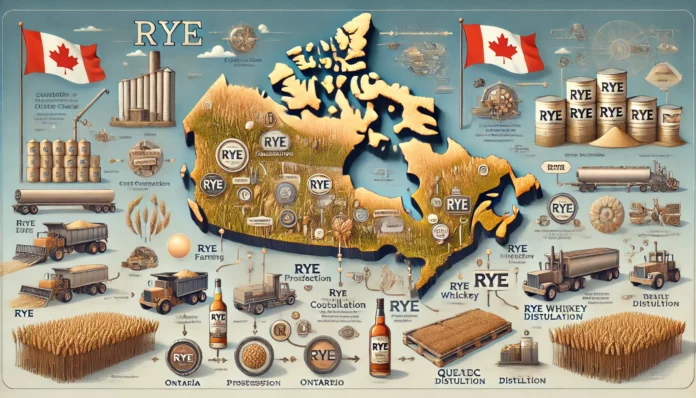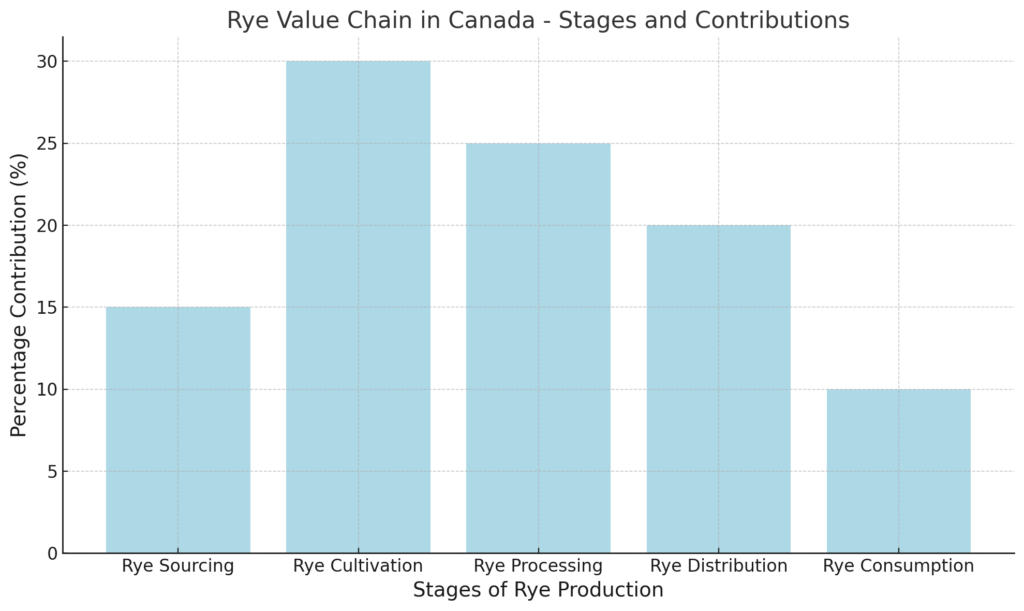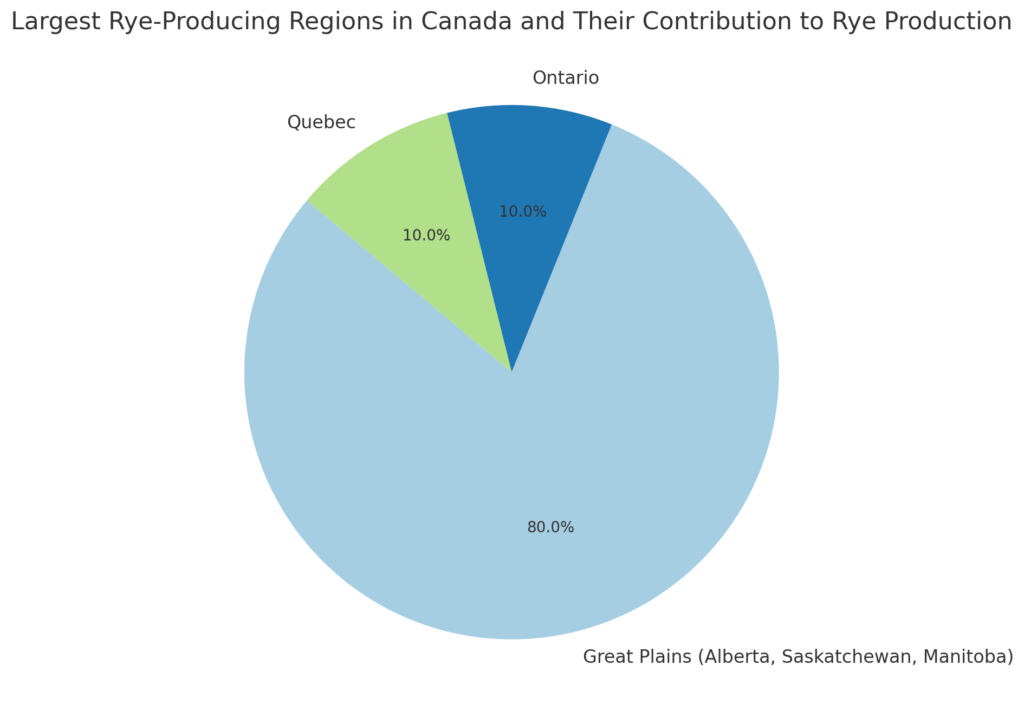
Introduction
Canada, known for its vast agricultural landscape, is a key player in the global grain market, producing a variety of crops, including rye. Rye (Secale cereale) is an important crop in Canada, used primarily for bread-making, animal feed, and the production of alcoholic beverages such as whiskey. While not as widely cultivated as wheat or corn, rye plays a crucial role in Canada’s agricultural and food industries.
This report takes a closer look at the largest rye-producing regions in Canada, examining the geographical factors that make these areas ideal for rye cultivation, the farming practices used to produce high-quality rye, and Canada’s position in the global rye market.

The Importance of Rye in Canada
Rye is a hardy cereal grain that thrives in cold climates, which makes Canada’s northern and prairie regions ideal for its cultivation. Rye is primarily grown for food production (such as rye flour for bread-making), animal feed, and for use in the distillation of spirits like rye whiskey.
In Canada, rye is also used as a cover crop to prevent soil erosion and improve soil health, particularly in the Prairie provinces. Rye has the ability to grow in less fertile soils and can be an essential part of crop rotation systems that help maintain long-term soil fertility.
In addition to domestic consumption, Canada exports rye to countries around the world, particularly those with a demand for rye-based products like bread and whiskey. As demand for rye continues to rise, Canada’s rye-producing regions play a vital role in meeting this global demand.
Key Rye-Producing Regions in Canada
Canada’s rye production is concentrated in a few regions that offer the ideal climate and soil conditions for growing rye. These regions are mainly found in the Prairie provinces (Alberta, Saskatchewan, and Manitoba) and parts of Ontario. Below are the largest rye-producing regions in Canada:
1. Prairie Provinces (Alberta, Saskatchewan, and Manitoba)
The Prairie provinces are the heart of Canada’s rye production. These regions are known for their vast, open fields and fertile soil, making them ideal for growing rye and other cereal grains. Rye thrives in the cooler temperatures and shorter growing seasons of the Prairies, where it is grown primarily for food production and as a cover crop.
Alberta
Alberta is one of the leading rye producers in Canada, with rye grown across its central and southern regions. The province has a long history of grain farming, and rye is an essential part of the crop rotation systems used by local farmers. Alberta’s climate, with its cold winters and cool growing seasons, is particularly well-suited to rye cultivation.
In Alberta, rye is primarily grown for food use, particularly for producing rye flour used in baking. The province is also home to several distilleries that use locally grown rye in the production of rye whiskey. Alberta’s access to key markets in both Canada and international regions makes it a central hub for rye production and export.
Saskatchewan
Saskatchewan is another major contributor to Canada’s rye industry. The province is a leading grain producer, and rye is a significant crop grown in its fertile soil. Saskatchewan’s climate, with long, cold winters, makes it an ideal environment for rye, which can withstand colder temperatures compared to other grains.
Rye is cultivated in Saskatchewan both for domestic consumption and for export. Saskatchewan’s rye is used in the production of rye flour, animal feed, and whiskey. The province’s vast farmlands and modern farming techniques help ensure that rye production remains efficient and high-quality.
Manitoba
Manitoba, located just to the east of Saskatchewan, is another key player in Canada’s rye production. The province is known for its diverse agricultural landscape, with rye grown primarily in the southern and central regions. Manitoba’s temperate climate, coupled with its fertile soil, allows for successful rye cultivation.
Rye in Manitoba is primarily used for food production, including bread-making. The province also contributes to the global rye market through exports, supplying countries that have high demand for rye flour and other rye-based products. Rye production in Manitoba supports both the domestic food industry and international markets.
2. Ontario
While Ontario is not as well-known for rye production as the Prairie provinces, it still plays a significant role in Canada’s rye industry. Rye is grown in Ontario, particularly in areas with rich, well-drained soil and a more moderate climate compared to the colder Prairie provinces. The southern parts of Ontario, with their longer growing seasons, provide a favorable environment for rye cultivation.
Ontario’s rye is used primarily for the food industry, particularly in baking and for the production of rye bread. The province also has a growing craft distilling industry that uses locally grown rye for the production of whiskey. Ontario’s proximity to major urban centers like Toronto allows for efficient distribution of rye-based products, both domestically and internationally.
3. Quebec
Quebec, although not one of the top producers of rye in Canada, has been increasing its rye cultivation in recent years. Rye is grown in the province’s southern regions, where the climate is conducive to grain farming. Quebec is known for its agricultural diversity, and rye is part of this mix, particularly for use in food products like bread and baked goods.
Quebec’s rye industry is bolstered by the province’s strong culinary tradition, with rye bread being a popular product in local bakeries. As demand for locally grown and sustainable food products continues to rise, Quebec’s role in rye production is expected to grow.
Factors Contributing to Rye Production in Canada
Several factors contribute to the success of rye production in Canada. These factors include:
- Climate and Growing Conditions: Rye thrives in cooler climates, making Canada’s northern and Prairie regions ideal for its cultivation. The crop’s ability to grow in shorter growing seasons and colder temperatures allows it to be a valuable crop in areas with challenging climates.
- Soil Quality: Rye is known for its ability to grow in less fertile soils, which makes it an essential crop for Canadian farmers. Rye is often used as a cover crop to improve soil health, prevent erosion, and enrich the soil for subsequent crops.
- Government Support: The Canadian government provides support to rye farmers through subsidies and programs aimed at maintaining agricultural productivity. This support helps ensure that rye production remains a viable option for Canadian farmers.
- Rye Whiskey Production: The growing demand for rye whiskey, particularly in Canadian distilleries, has contributed to the rise in rye cultivation. Canadian rye whiskey is highly regarded worldwide, and distilleries use locally grown rye to produce this popular spirit.
- Sustainability: Rye is an environmentally friendly crop, often used in crop rotation systems to improve soil health and reduce the need for chemical fertilizers. As Canadian farmers seek more sustainable farming practices, rye is becoming an increasingly popular choice.
Conclusion
Canada is one of the world’s leading producers of rye, and its largest rye-producing regions play a crucial role in the global rye market. The Prairie provinces (Alberta, Saskatchewan, and Manitoba) are the heart of Canada’s rye industry, with favorable growing conditions that make them ideal for rye cultivation. Ontario and Quebec also contribute to Canada’s rye production, with their growing rye industries supporting both domestic and international demand.
As the demand for rye-based products, including rye bread, rye whiskey, and animal feed, continues to rise, Canada’s key rye-producing regions will remain essential to the success of the country’s rye industry. With its strong agricultural base, commitment to sustainability, and growing role in global rye markets, Canada is well-positioned to remain a key player in the global rye industry.



